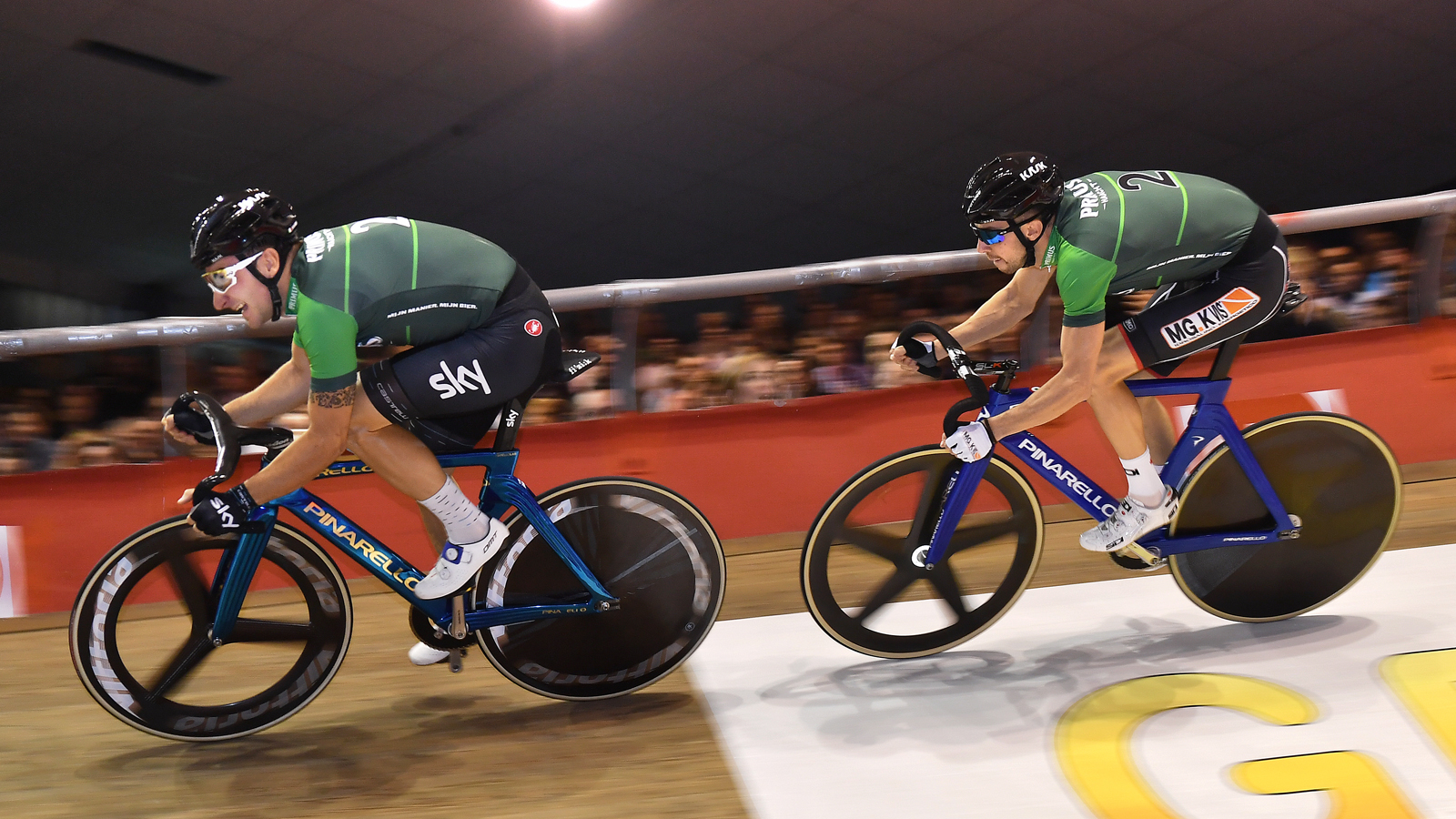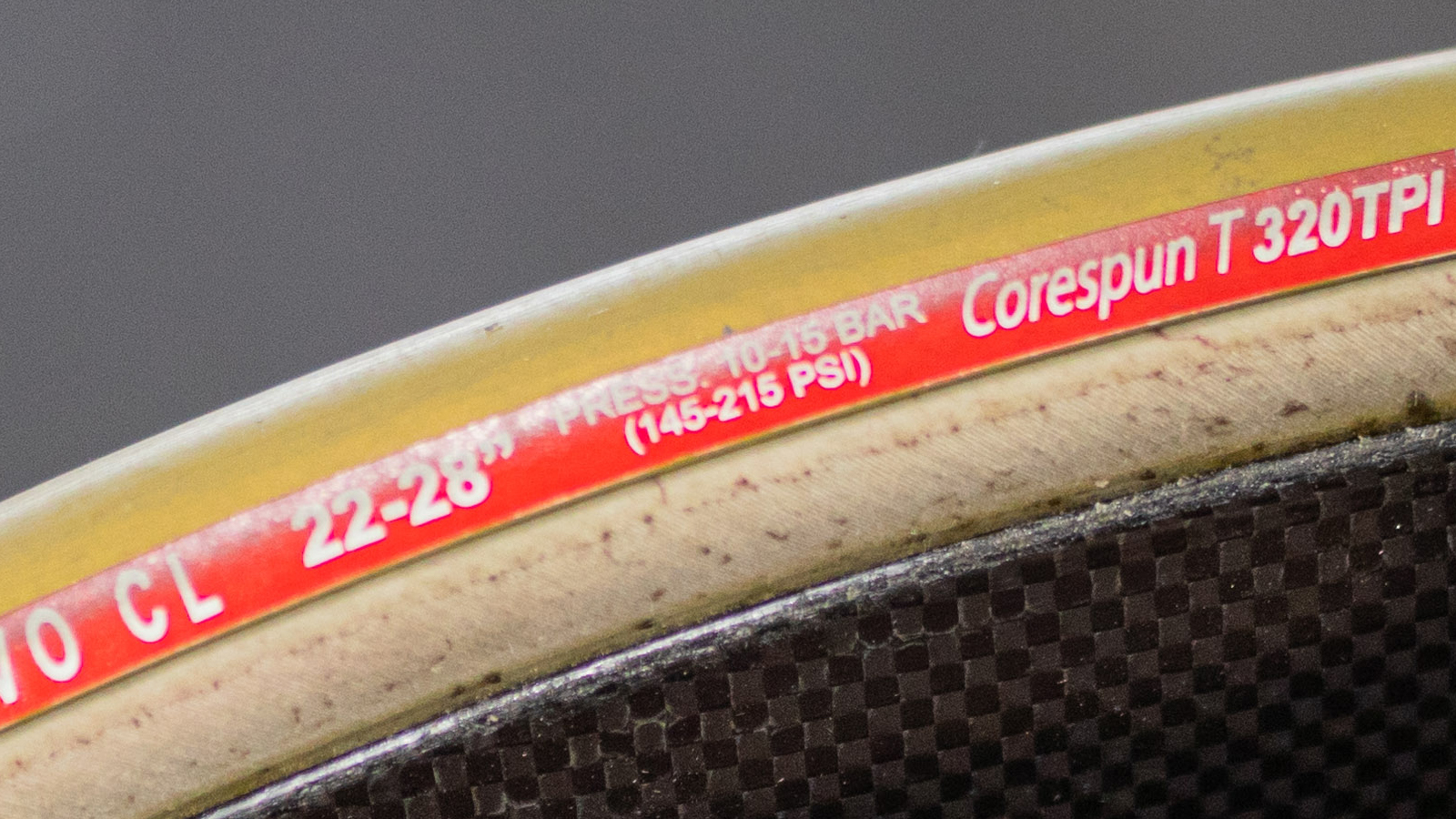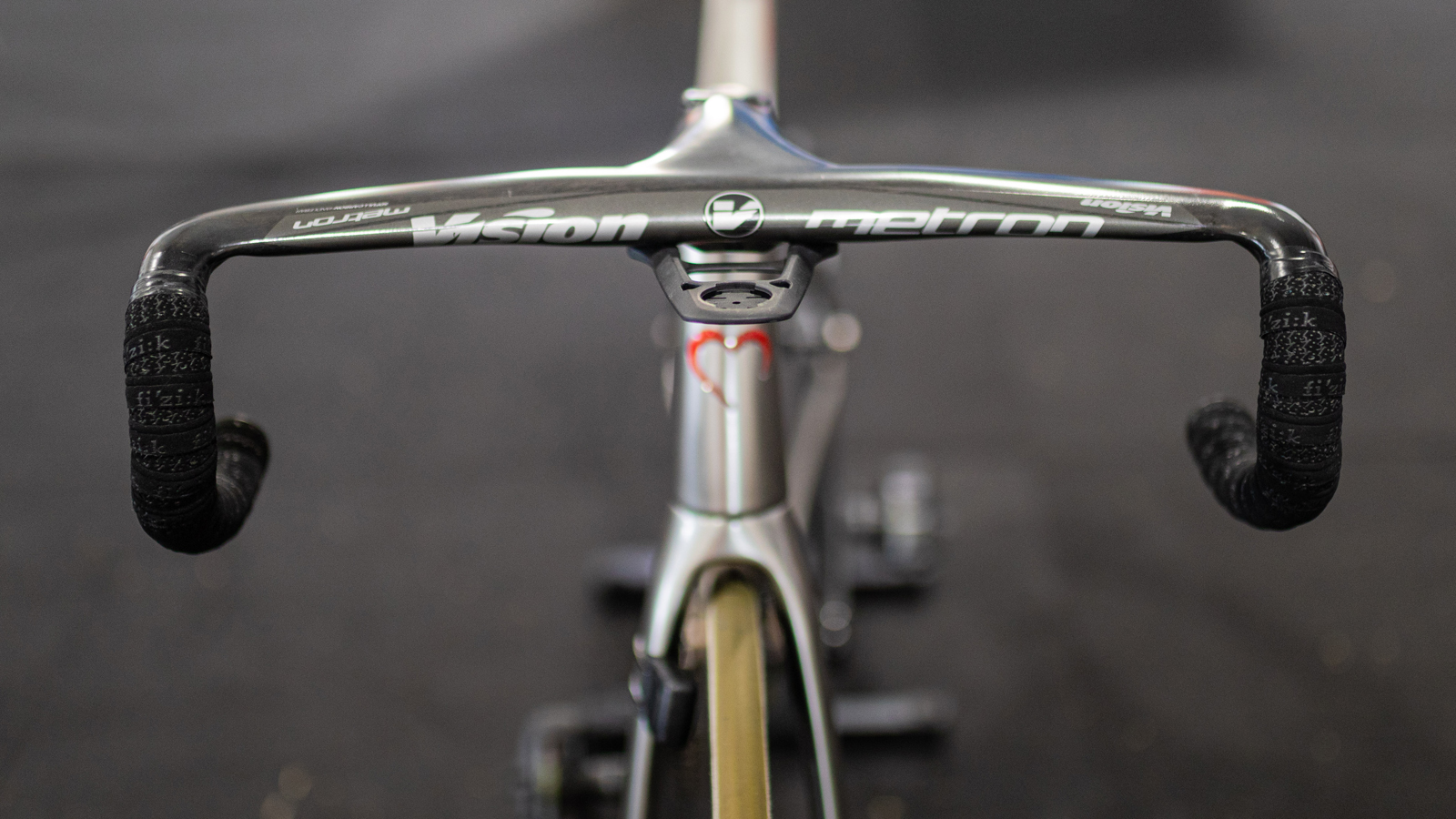Track bike vs road bike: Understanding the differences
We explore the similarities and differences between a track bike and a road bike

There a lot of different bikes in the Olympics, from road bikes and time trial bikes, to track bikes, BMX bikes, and mountain bikes. At the end of the day, they’re all bikes, but when you look a bit closer they could not be more different. BMX bikes are tiny, time trial frames have thick tubes and 3D-printed aerobars, and mountain bikes have chunky tyres and a cassette as big as a dinner plate. Then there are track bikes, with no brakes and a fixed gear.
A track bike is the purest form of cycling. The lack of brakes and only one gear puts the rider in complete control. There are no debates about rim versus disc brakes, 10-speed versus 11-speed, or one-by versus traditional. On a track bike, there are few things to customise, namely the frame, wheels, and gearing. That’s about it.
Meanwhile, the best road bikes can look and feel completely different due to their tube shapes, brakes, gearing, geometry, and more. Before we dive into the details, let’s get the 10,000-foot view of track bikes vs road bikes.


Purpose of track bikes and road bikes
Track bikes are meant for one thing and one thing only: track racing. They are not meant for road riding. Sure, you can take your track bike on the road if you want to, but it won’t be an enjoyable ride, and it will be illegal in certain localities without a brake. Track bikes are meant to go fast around a velodrome, a purpose-built bike racing circuit made out of wood or concrete. Velodromes range from 133 meters in length to over 450 metres and form an oval shape, including steep banking that helps riders carry speed through the corners without braking.
Road bikes are meant for all sorts of riding, from city streets and bike paths to Alpine climbs and California coasts. The shape of road bikes can range from aerodynamic frames to lightweight climbing machines, and road wheels follow a similar pattern.
Unlike track bikes, road bikes come with brakes and derailleurs, allowing riders to choose from a wide variety of braking and gearing combinations. Brakes allow road riders to be more comfortable on city streets and ride in groups, as well as tackling steep descents with the ability to stop quickly from high speeds. Many modern road bikes allow for greater tyre clearance, giving riders the option of throwing on thick tyres and traversing a gravel road or light trail.




Gears and brakes (or lack thereof)
The speed of a track bike is controlled by the rider pushing and pulling on the pedals. And we're not talking about ‘pulling’ as in pulling on the upstroke, we're talking about pulling up on the downstroke in order to slow yourself down. Track bikes come with one fixed gear – that’s one chainring in the front, and one cog in the back. There are no derailleurs and there is no freewheeling. If you’re a beginner to track cycling, don’t suddenly stop pedalling!
The latest race content, interviews, features, reviews and expert buying guides, direct to your inbox!
Experienced track riders will experiment with an abundance of gears before settling on their preferred gears for warming up, mass start racing, and time trial racing. Track gearing is often referred to in a certain numbers of inches, rather than the “53x11” that you would hear from a road rider. Gear inches are calculated as the number of teeth on the front chainring, divided by the number of teeth on the rear sprocket, and then the answer is multiplied by the size of the circumference of the wheel in inches.
Most track riders prefer front chainrings between 45t and 60t, with a rear cog between 12t and 16t. A typical warm-up gear for a track cyclist would be a 48x16.
Gearing is especially important during track races, because you will be using the same exact gear to sit in, ride easy, attack, and sprint. A 53x11 (or 126-inch gear) might be perfect for sprinting, but it’s going to be painful trying to turn that gear over in the pack with 10 laps to go.
Road bikes, on the other hand, have many gears to choose from; with modern technology, you have the option of any front chainring from 36t to 58t on most road bikes when paired with the proper derailleur. It can be a bit trickier to set up a road bike versus a track bike, just because of the added complexity of choice. Without derailleurs, there is less to worry about when setting up a track bike. But with a road bike, you will need to find compatible components, make sure everything’s in alignment, and make multiple micro-adjustments to ensure perfect shifting.
That said, road bikes are built for a variety of terrain, from steep climbs and switchback descents to flat-out sprints. With as many as 24 gears available (using a modern 2x12 groupset), you can almost always keep a comfortable cadence on a road bike regardless of the grade.
One of the scariest parts of riding a track bike for the first time is its absence of brakes. “But how do you stop?!” Remember that on a fixed gear bike, the speed of the bike/rear wheel is driven by the revolution of the cranks. Because the gear is fixed, there is no coasting, and so in order to stop, you need to slow down the wheel by slowing down the cranks. Once you’re up to speed, you’ll feel the cranks spinning naturally with the momentum of the bike. In order to slow down, you need to resist the momentum of the cranks. This will slow down the cranks, and thus the wheel, and eventually bring you to a stop without brakes.
You may have seen bike messengers or fixed gear enthusiasts skidding on a fixed gear to come to a stop. Do not try this on a track bike, as you will severely damage your rear tyre, which is much narrower and more fragile than a road tyre.
Road bikes are much easier to stop thanks to their brakes. The brake levers will be on the ‘hoods’, which is an attachment on the top of a road bike’s handlebars that typically contains both the front and rear brake and shifter levers. You won’t find hoods on a track bike’s handlebars – instead, it will be just the drop bars.
A road bike’s brakes act on either the rim (rim brakes) or a disc brake rotor (disc brakes). Brake pads, which are operated by the brake levers, squeeze the rim or rotor, using friction to slow down its rotation, and thus, slow down the wheel. On a track bike, there are no brakes to act on the rim, and so all of the deceleration happens at the hub of the rear wheel where the rear cog is attached.
Frame geometry
A track bike frame doesn’t look all that different from a road bike frame. Even the different variations of track and road bikes look fairly similar, with aero tube shapes. But when we look closer, we can see a few significant differences.
Track bikes typically have a shorter reach and top tube, as well as a shallower fork rake. A higher bottom bracket in track bikes also gives riders more clearance when pedalling on the steeply banked corners of a velodrome. All these factors combine to give track bikes a stiffer feeling and sharper handling at high speeds. With Olympic sprinters hitting close to 3,000 watts, a stiff bike that helps to transfer that power through the wheel can make all the difference.
Road bike frames have a more relaxed look and feel, with a longer reach and top tube, and lower bottom bracket. This makes road bikes much more comfortable for long days in the saddle, and on a variety of terrain including steep climbs, flat roads, windy days, and easy commutes. A more compliant frame will also make road bikes more comfortable when riding over bumps or cracks in the road. Because track bikes are meant exclusively for the velodrome, they are built for super flat surfaces only.
Now, we should mention that not all track bikes are the same. Mass start racing (scratch race, points race) and time trial racing (individual or team pursuit, Kilo time trial) are completely different events and thus require completely different track bike setups.
So far we’ve been talking about traditional track bikes which are meant for mass start racing. When it comes to time trials on the track, most amateurs will ride the same frame as before but will switch out their drop bars for aero bars. Professionals may have two different track bikes for mass start race or time trials, the latter being characterized by super-aerodynamic frames, solid (disc) wheels front and rear, and custom made aero bars.
Track bikes meant for time trials only (also known as pursuit bikes) will be as stiff as possible, with a frame and set-up that is optimized for the aero position. In regards to frame geometry, this translates to a steeper seat angle, and an even shorter top tube. This puts the rider directly above the bottom bracket, with their chest parallel to the ground, and their hips rotated forward. Compared to a traditional track bike, a pursuit bike will put the rider in the most aerodynamic position possible.




Wheels and tyres
Disc wheels - a solid carbon fibre disc, instead of a rim-and-spokes design - are a track racing staple, with most riders using one in every mass start race, and using two in pursuit or time trial events. On the road, disc wheels are exclusive to time trials because they are heavy and hard to handle, especially in crosswinds. Track riders needn’t worry about braking, corners, or wind (unless they’re riding on an outdoor velodrome), and so a disc wheel is invariably the fastest choice.
For mass start events, track riders opt for deep-sectioned rims, or (if they have the means) a more expensive set-up including a five-spoke up front (a carbon fibre wheel with three large 'spokes' constructed as a single piece) and disc wheel in the rear.
This creates the fastest and most aerodynamic set-up, with much better handling than a double-disc wheel set-up. However, for pursuits and time trials, riders want to be as aerodynamic as possible and will use the double-disc setup, i.e. disc wheels on both the front and rear of their bike.
Road bikes can handle all sorts of wheel and tyre combinations nowadays thanks to increased clearance and a desire to ride off-road. Riders can choose from clincher, tubular, and tubeless set-ups, and anywhere from a 21mm tyre to a 38mm tyre, if their bike can handle it. Most set-ups work best with tyre pressure between 50 and 100psi, with lower pressure being superior in wet conditions.
The best road bike tyres are meant to be durable and perform in a variety of conditions from bumpy roads to wet descents. Thus, every road tyre has a little bit of tread, with heavy-duty models coming with a thick casing and thicker tread. Race tyres will be lighter and less durable, but put riders at a higher risk of getting a puncture.
Track bikes typically have narrower wheels and tyres meant purely for speed. Tubular set-ups are most common, with thin, rubber tyres and a silk tyre casing that is pumped up to 150-200psi. Depending on the smoothness of the velodrome, some riders prefer no more than 100psi in case they hit a small bump or crack.




Handlebars (cockpit) and components
There’s not much to say when describing a mass-start track bike’s cockpit. It’s really just the handlebars, and that’s about it. Most velodromes don’t even allow you to have your bike computer mounted upfront.
For time trials or pursuits, you can replace drop bars with aero bars. This completely changes the front end of your track bike, as detailed above. Unlike road time trial bikes, track aero bars (or pursuit bars) don’t have shifters and are really just there for you to hold onto. Pursuit bars are typically narrower than drop bars at the horns, while track drop bars are a similar width to road bars, with both being around 42cm wide.
Road bikes, on the other hand, have hoods on the front of their drop bars, which house the brake and shift levers. Most road riders keep their hands on the hoods while riding, and save the drops for racing, cornering, or descending. Without hoods, most track riders keep their hands in the drops while riding or racing, with some wrapping their hands around the front of the bars, where the hoods would normally be. It is rare to see a track rider with their hands on the tops – the only time this usually happens is when they’re riding easy during a warm-up, or are waiting for their Madison partner.
- Tokyo Olympics: What is the Madison?
Amateur track riders might just add clip-on aero bars on top of their track bike’s drop bars, while professionals might have 3D printed aero bars custom moulded in the wind tunnel. Most aero bar setups are adjustable, so you can experiment with your position – much like gearing – on the track bike before finding what’s best for you.
Position
We’ve already alluded to it, but it’s important to point out the differences between a track and road riding position.
On the track, most riders will stay in the drops for the majority of the race, or drape their hands over the top corner of the drop bars where the hoods would be – This position is not unlike the ‘imaginary aero bars’ position which had been banned by the UCI, but in this track riding position, riders turn their palms down and still maintain a good grip on the front of their drop bars.
In pursuit events, riders will sprint out of the blocks on the horns of the base bar, and then settle into their aero bars once they’re up to speed. Overall, a track rider will be further forward, further down, and much more aerodynamic than a road rider on the hoods.
Because of the fixed-gear nature of track racing, there is never an opportunity to coast, stretch, or get out of the saddle for more than a few seconds. Thus, you’ll want to really dial in your position on the track bike so that you can be as comfortable as possible during longer races.
Pursuit bikes have one of the most extreme positions in all of cycling. Many riders look scrunched up, short and narrow, forced into a position that is as aerodynamic as possible. Time trials are all about speed, and that’s exactly what pursuit bikes are meant for. When first jumping onto a pursuit bike, it's not uncommon to get sore in your lower back, quads, glutes, and hamstrings. The pedalling style on a pursuit bike is significantly different than on a traditional bike, so it may take some time to get used to. But just like any other form of muscular training, your body will adapt to stress over time, and with a little bit of practice, you’ll be faster than ever.
Zach is a freelance writer, the head of ZNehr Coaching, and an elite-level rider in road, track, and e-racing. He writes about everything cycling-related, from buyer's guides to product reviews and feature articles to power analyses. After earning a Bachelor’s Degree in Exercise Science at Marian University-Indianapolis, Zach discovered a passion for writing that soon turned into a full-fledged career. In between articles, Zach spends his time working with endurance athletes of all abilities and ages at ZNehr Coaching. After entering the sport at age 17, Zach went on to have a wonderful road racing career that included winning the 2017 Collegiate National Time Trial Championships and a 9th place finish at the 2019 US Pro National Time Trial Championships. Nowadays, Zach spends most of his ride time indoors with NeXT eSport.